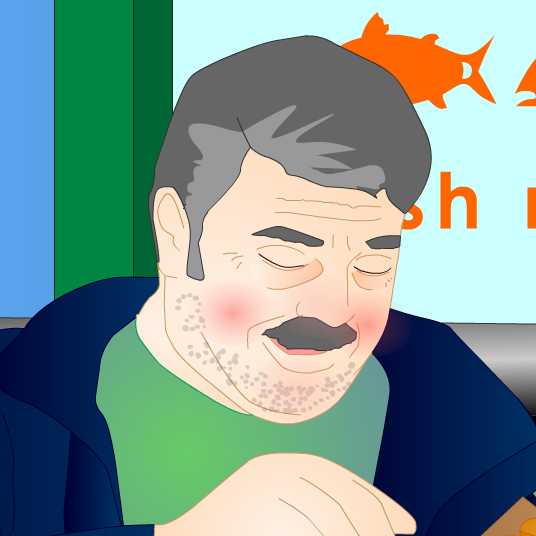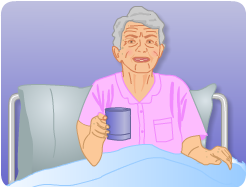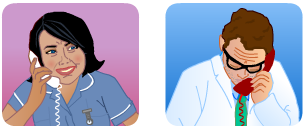Q. Why is it important to measure glucose after an acute stroke? Answer each of the Yes/No questions below:
Bob’s capillary blood glucose (CBG/BM) was 10.8 mmol/l.
Bob’s capillary blood glucose (CBG/BM) was 10.8 mmol/l.


Bob, a 59 year old man weighing 28 stone, was in the fish and chip shop when he developed sudden vertigo.
He was driven straight to A&E where it was noted that he had a nystagmus (uncontrolled eye movements) and ataxia (lack of coordination). A diagnosis of posterior circulation stroke was confirmed on a CT brain scan.
A number of tests and assessments were carried out on admission including urine analysis, capillary blood glucose (CBG) and has glycated haemoglobin (HbA1c) test. His HbA1c is 47.0 mmol/mol with glycosuria and he is complaining of needing to go to toilet frequently.
Even though the HbA1c test result for Bob is <48.0mmol/mol (<6.4% ) it is within the range of 42 to 47 mmol/mol (6.0–6.4%) suggesting impaired glucose regulation and as he has other symptoms of diabetes further investigation is required. For more details of glycated haemoglobin (HbA1c) range see additional information.
You should also ask if Bob has a history of diabetes and if he takes steroid tablets, as steroids may increase glucose levels. Bob’s glucose levels need to be monitored and a decision made about further treatment. For more information on hyperglycaemia in acute stroke see additional information.
In this case it is expected that you will have learned and understood the following points:
Using local early warning score system it is evident that Jean’s blood pressure and heart rate have now stabilised and she has not experienced any further episodes of tachycardia or hypotension. Jean tells you she is feeling much better and is looking forward to a visit from her family this afternoon.
Jean’s chart after IV rehydration [.pdf, 146KB]

It is likely that Jean’s hypotension was caused by dehydration and Jean tells the Doctor that she has not had anything to drink for about 12 hours having had a swallow assessment completed shortly after admission to hospital. The Scottish stroke care standards stipulate that swallowing ability must be assessed within 4 hours of admission to hospital.

You also give the Doctor the following information from Jean’s notes:
| Test | Result | Normal range |
|---|---|---|
| Urea | 12.6 | 2.5-6.7 mmol/L |
| Na | 155 | 135-145 |
| Potassium | 4.7 | 3.5-5.0 |
| Random blood glucose | 5.0 | 3.5-5.0 |
| Creatinine | 200 | 70-150 |
| Haemaglobin | 15 | 11.5-16 g/dl (female) |
| INR | 1.1 | normal range: < 1.4 |
|
||


You speak to the Doctor. The Doctor says ‘You did the right thing in calling me. Can you give me more information?’
Jean is hypotensive so needs to be monitored more regularly.
You make your observations and fill them out on the chart below.
| Temperature | 36.8 °C |
|---|---|
| Heart Rate (HR) | 120 bpm |
| Oxygen Saturation | 97% |
| Blood Pressure | 80/40 |
Based on the results of your observations, what would you do now?
Later on whilst Jean was transferring to the commode she complained of feeling dizzy so you take a new set of observations.
| Temperature | 36.8 °C |
|---|---|
| Heart Rate (HR) | 100 bpm |
| Oxygen Saturation | 97% |
| Blood Pressure | 90/70 |